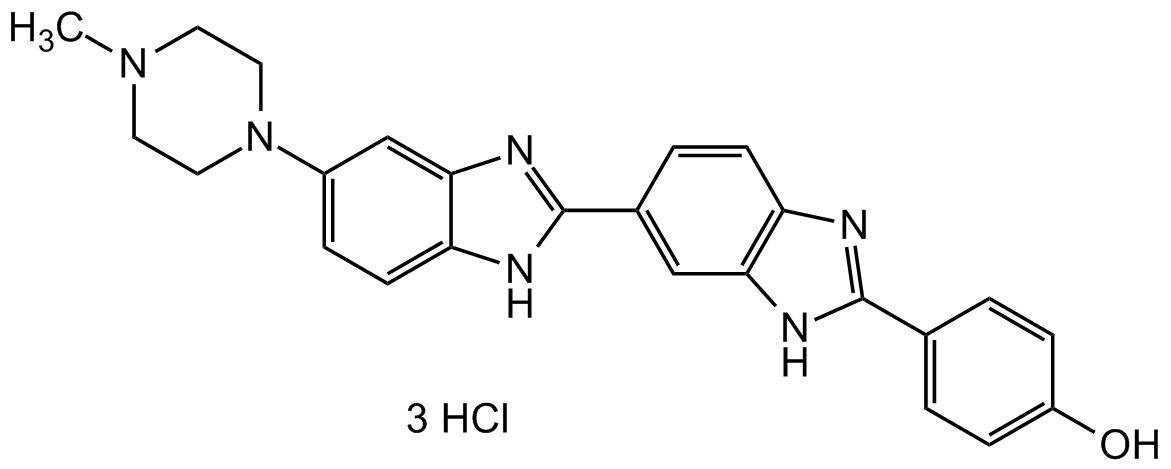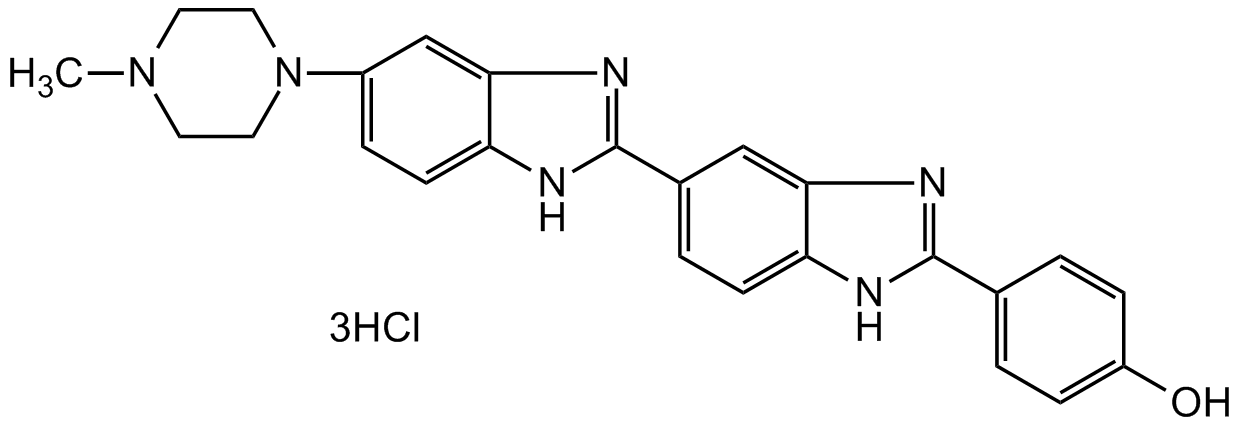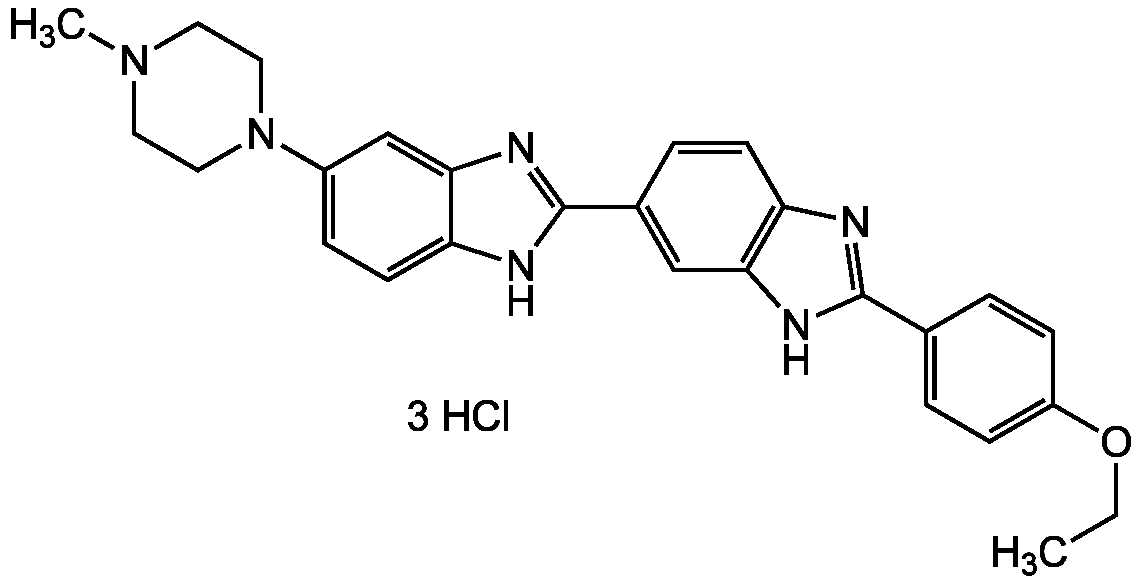
Chemical Structure
Hoechst 33258 solution (20 mM in water), 10.7 mg/ml in water
CDX-B0446
CAS Number23491-45-4
Product group Chemicals
Estimated Purity>98%
Molecular Weight533.88
Overview
- SupplierChemodex
- Product NameHoechst 33258 solution (20 mM in water), 10.7 mg/ml in water
- Delivery Days Customer10
- CAS Number23491-45-4
- CertificationResearch Use Only
- Concentration1 mg/ml
- Estimated Purity>98%
- Hazard InformationWarning
- Molecular FormulaC25H24N6O . 3HCl
- Molecular Weight533.88
- Scientific DescriptionChemical. CAS: 23491-45-4. Formula: C25H24N6O . 3HCl. MW: 533.88. The Hoechst stains are a family of fluorescent stains for labeling DNA in fluorescence microscopy. The blue fluorescent Hoechst dye is a cell permeable nucleic acid stain that has multiple applications, including sensitive detection of DNA in the presence of RNA in agarose gels, automated DNA determination, sensitive determination of cell number and chromosome sorting. Useful vital stain for the flow cytometric recognition of DNA damage and other viability measurements by monitoring the emission spectral shifts of the dyes. Because this fluorescent stain labels DNA, it can also be used to visualize nuclei and mitochondria. This dye is commonly used for determining the DNA content of viable cells without detergent treatment or fixation and for fluorescence microscopy or flow cytometry. Hoechst 33258 is a cell-permeable, benzimidazole dye that binds to the minor groove of double stranded DNA with preference for adenine and thymine-rich sequences. It emits blue fluorescence (excitation 352nm/emission max 461nm) when bound to DNA in either live or fixed cells and is useful as a marker of nuclei for cell cycle studies and to distinguish nuclear morphology in apoptotic cells. - The Hoechst stains are a family of fluorescent stains for labeling DNA in fluorescence microscopy. The blue fluorescent Hoechst dye is a cell permeable nucleic acid stain that has multiple applications, including sensitive detection of DNA in the presence of RNA in agarose gels, automated DNA determination, sensitive determination of cell number and chromosome sorting. Useful vital stain for the flow cytometric recognition of DNA damage and other viability measurements by monitoring the emission spectral shifts of the dyes. Because this fluorescent stain labels DNA, it can also be used to visualize nuclei and mitochondria. This dye is commonly used for determining the DNA content of viable cells without detergent treatment or fixation and for fluorescence microscopy or flow cytometry. Hoechst 33258 is a cell-permeable, benzimidazole dye that binds to the minor groove of double stranded DNA with preference for adenine and thymine-rich sequences. It emits blue fluorescence (excitation 352nm/emission max 461nm) when bound to DNA in either live or fixed cells and is useful as a marker of nuclei for cell cycle studies and to distinguish nuclear morphology in apoptotic cells.
- SMILESCN(CC1)CCN1C2=CC=C(NC(C3=CC(NC(C4=CC=C(O)C=C4)=N5)=C5C=C3)=N6)C6=C2
- Storage Instruction2°C to 8°C
- UNSPSC41116134

![Hoechst 33258 [23491-45-4]](https://www.antibodies.com/image/catalog/319/A319645_1.jpg)


![Hoechst 33258 trihydrochloride [23491-45-4]](https://www.targetmol.com/group3/M00/37/B2/CgoaEWayUKCEduAhAAAAADZVamI025.png)